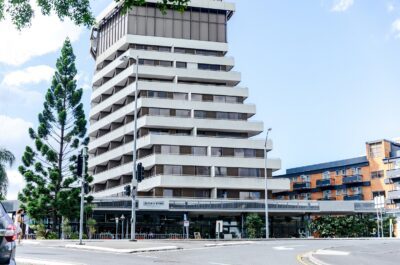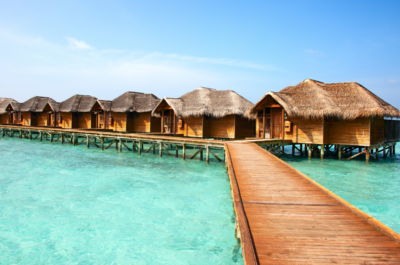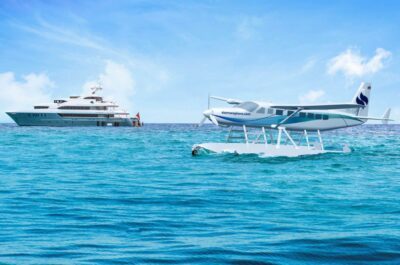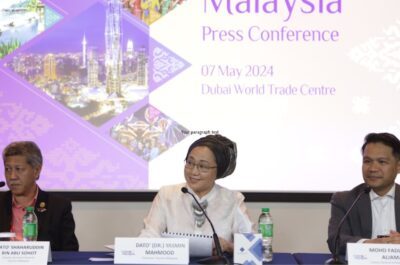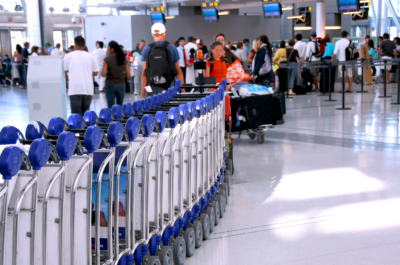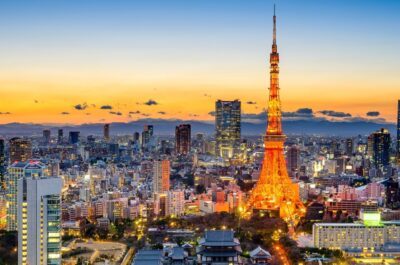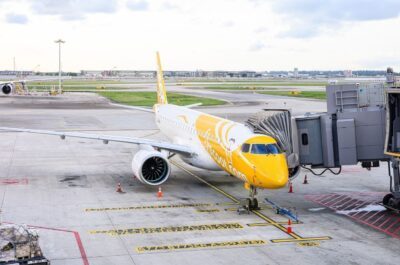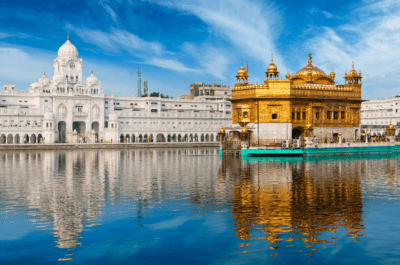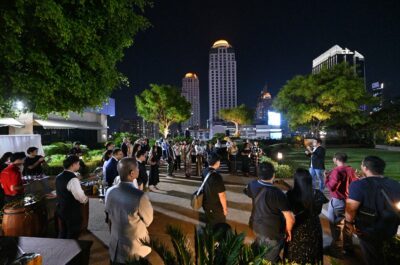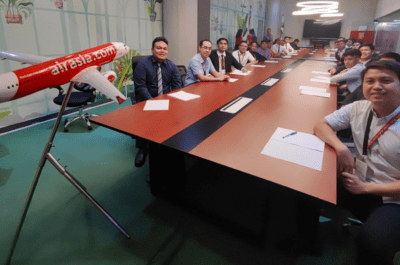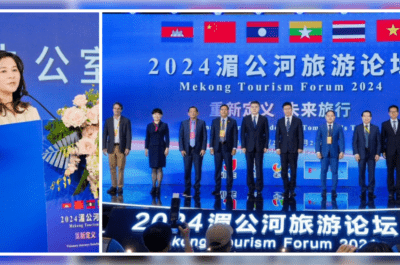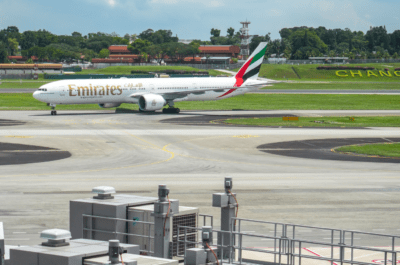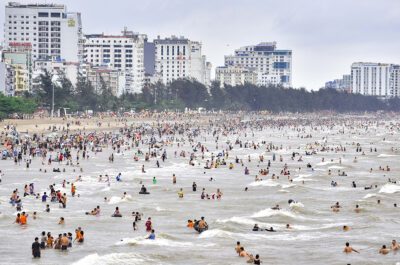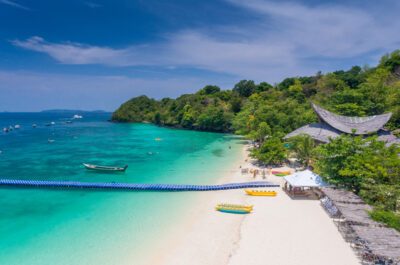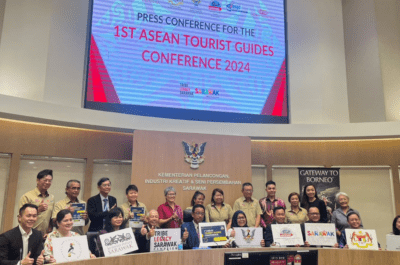…
June 26, 2005 marked six months since the devastating tsunami that swept the Indian Ocean, often called the first major natural disaster of the 21st century.
The world came together like never before to alleviate the suffering of hundreds of thousands of people who lost family, friends and loved ones, as well as livelihoods and belongings. Large parts of cities, entire towns and villages, shops, schools and infrastructure were destroyed or severely damaged. Government administration and public services came to a halt.
Although several thousand tourists were affected in Thailand, the Maldives and Sri Lanka, several hundred thousand local people were devastated in those countries, as well as in India, Indonesia, Malaysia, Bangladesh and as far as away as Yemen and Somalia. Tourism was only one of many coastline industries affected, along with fisheries, coconut plantations and other forms of agriculture. The poor were worst hit, especially women and children.
What can be destroyed in a few seconds takes years to rebuild. While the emergency relief phase is over in Indonesia, Sri Lanka, the Maldives and India, rehabilitation is expected to take from six months to two years. Total reconstruction is expected to take up to five years in badly hit areas.
By and large, a five-pillar strategic blueprint is being followed: 1) Restore purely public infrastructure (roads, schools and health facilities); 2) restore public infrastructure in support of private sector activities; 3) stimulate the local economy; 4) restore government and civic administration; and 5) secure the environment from new natural disasters.
According to the United Nations Economic and Social Commission for Asia-Pacific (UNESCAP), the costs of reconstruction are estimated to total US$5 billion for Indonesia and US$3.5 billion for Sri Lanka. With the addition of India, the Maldives and Thailand, the total reconstruction costs over the next three to five years are expected to be between US$9.8 billion and US$12.5 billion. By the end of May 2005, US$6.7 billion had been pledged by donor countries, private individuals and corporations, of which about US$5.8 billion was pledged by governments. However, records show that as of May 2005, only about US$2.5 billion of the total amount pledged has been committed or paid up.
For Asia, the tsunami was yet another addition to a string of natural disasters that the region has faced, which included floods, droughts, cyclones, hurricanes, typhoons and earthquakes that have claimed thousands of lives and caused billions of dollars worth of damage. The UN says 80% of the world`s natural disasters occur in the Asia Pacific region.
The tsunami did not just affect Asia. It struck as far away as Somalia, where it was peak fishing season. Up to 200 people died and 54,000 were displaced. Homes were destroyed, community infrastructure damaged, fishing boats and gear lost and surface water points demolished or contaminated.
On the Arabian Peninsula, Yemen was also hit, affecting fishing communities in areas close to the tip of the Horn of Africa and bordering Oman. Waves of up to six metres destroyed 50 fishing boats and 69 outboard motors and washed some of the boats as far as one kilometre inland.
IMPACT ON TOURISM
Tourism recovery has varied from country to country, but the second half of the 2004/05 high season has been extremely disappointing. Vigorous marketing and promotional campaigns by the affected Asia Pacific countries have done little to persuade potential travellers that the vast majority of tourist products, services and facilities are open for business.
Thailand, arguably the worst affected in terms of tourist casualties, was seeing occupancies of only around 20% in Phuket and the neighbouring islands and coastal areas as of June 2005. Airline capacity was down significantly. Officials were turning to the domestic market to prop up business.
Thailand also sought to use the Miss Universe pageant, held in Bangkok on May 31, to convince TV viewers in about 180 countries of an `all-clear` message. The 80 contestants were flown to Phuket to be videotaped on the beaches there, scenes that were edited into the live coverage of the finals.
Sri Lanka is doing better, thanks to strong growth in Indian arrivals since the abolition of the visa requirement. According to the Sri Lankan tourism website, arrivals in May totalled 40,878, a 35.5% increase over the 30,162 visitors in May 2004. Arrivals from India topped the list with 10,524 arrivals, followed by the UK with 6,114, Germany with 3,156 and France with 2,118.
These numbers, however, belie the reality in some areas. Hotel statistics for April show that while Colombo city saw an increase of 20.9% in total guest nights, the South coast up to and beyond Galle had seen a drop of 51.7%.
The Maldives, in economic terms, was worst affected. Some 53 of the roughly 200 small islands sustained serious damage, while 191 were flooded to some extent. Ground water on 30 islands was contaminated, in some cases with asbestos and oil. About 100,000 people, one third of the population, were directly affected in the tiny nation`s two biggest industries, fisheries and tourism.
Tourist resorts exist on 87 of the Maldives` 200 inhabited islands, 19 of which had to be evacuated altogether. Many others were closed for short periods. However, by June 2005, 72 of the resorts had reopened with many others slated to reopen soon.
| Top 15 International Arrivals to the Maldives (Jan-May 2004) | |||
| Nationality | 2004 | 2005 | % Change |
| Sri Lanka | 3,227 | 2,841 | -12.0 |
| India | 4,757 | 4,020 | -15.5 |
| Russia | 8,035 | 5,360 | -33.3 |
| Germany | 32,441 | 21,518 | -33.7 |
| USA | 2,571 | 1,695 | -34.1 |
| UK | 49,741 | 31,402 | -36.9 |
| Austria | 6,375 | 3,512 | -44.9 |
| Switzerland | 14,472 | 7,868 | -45.6 |
| Australia | 3,378 | 1,805 | -46.6 |
| Italy | 68,578 | 26,359 | -61.6 |
| Other Asia | 2,713 | 1,000 | -63.1 |
| Korea | 3,969 | 1,402 | -64.7 |
| Japan | 16,783 | 5,649 | -66.3 |
| France | 25,531 | 8,284 | -67.6 |
| China | 9,955 | 2,171 | -78.2 |
| Total | 252,526 | 124,886 | -50.5 |
| Source: Ministry of Tourism, the Maldives | |||
ALSO AFFECTED
Known in Asia as the `Tree of Life`, coconut palms grow only along coastlines. According to the Asian and Pacific Coconut Community, the worst hit plantations were in Indonesia, followed by India. In the Indonesian province of Nanggroe Aceh Darusalam, about 178,928 small landholders on 116,642 hectares depend on coconut plantations which collectively produce about 78,442 tons of copra (dried coconut meat from which oil is extracted) per year.
Although only 19,000 hectares of coconut plantations were reported lost in the province, the entire area was affected in one way or another. The greatest damage occurred in Aceh Besar, where 5,537 hectares belonging to 5,496 farming families were lost. In Aceh Jaya, another 2,480 hectares supporting 1,530 farmer families were lost.
In Sri Lanka, also a major producer of coconut and its products, coir fibre industries on the coast were wiped out, including 17 fibre mills, two fibre finished product export units, 43 fibre finished product manufacturing units, 71 fibre yarn industries and 500 ramp spinning yarn units, as well as two oil mills and two copra mills.
| Top 15 International Arrivals to Sri Lanka (Jan-May 2004) | |||
| Country of Residence | 2004 | 2005 | % Change |
| USA | 5,040 | 10,902 | 116.3 |
| Maldives | 4,848 | 10,182 | 110.0 |
| Canada | 4,536 | 7,761 | 71.1 |
| India | 30,747 | 45,099 | 46.7 |
| Australia | 6,843 | 9,222 | 34.8 |
| France | 11,070 | 11,754 | 6.2 |
| Japan | 7,386 | 6,630 | -10.2 |
| UK | 38,124 | 32,325 | -15.2 |
| Switzerland | 3,663 | 2,946 | -19.6 |
| Germany | 22,299 | 16,227 | -27.2 |
| Netherlands | 7,680 | 4,662 | -39.3 |
| Other Eastern Europe | 4,278 | 2,421 | -43.4 |
| Sweden | 3,489 | 1,818 | -47.9 |
| Italy | 6,630 | 3,324 | -49.9 |
| Austria | 3,945 | 1,557 | -60.5 |
| Total | 160,578 | 166,830 | 3.9 |
| Source: Sri Lanka Tourism Board | |||
In India, coconut plantations in the Andaman and Nicobar Islands were destroyed, as were those in many in parts of coastal Tamil Nadu and Kerala. Surviving plantations were hit by salt water, soil erosion and germ attacks. It is estimated that they may take three years to return to normal if properly cared for and managed.
Surviving palms proved to be sources of survival after the tsunami. They provided food and drink until food became available from other sources. The logs of fallen trees and living coconut trees were cut and used to build rehabilitation shelters. During the reconstruction period, artisans were being trained to make furniture from damaged and dead coconut wood as well as handicrafts from various parts of the coconut palm.
| Top 15 International Air Arrivals to Bangkok, Thailand (Jan-May 2004) | |||
| Nationality | 2004 | 2005 | % Change |
| Malaysia | 94,756 | 124,685 | 31.6 |
| Singapore | 139,437 | 177,262 | 27.1 |
| Sweden | 58,642 | 71,765 | 22.4 |
| India | 116,634 | 129,424 | 11.0 |
| Australia | 112,311 | 120,939 | 7.7 |
| UK | 235,172 | 251,440 | 6.9 |
| Germany | 154,434 | 160,434 | 3.9 |
| Japan | 393,395 | 407,247 | 3.5 |
| France | 88,701 | 91,318 | 3.0 |
| USA | 217,268 | 221,855 | 2.1 |
| Canada | 53,412 | 4,208 | 1.5 |
| Hong Kong SAR | 138,218 | 114,912 | -16.9 |
| Chinese Taipei | 135,841 | 112,640 | -17.1 |
| Korea (ROK) | 268,046 | 209,874 | -21.7 |
| China (PRC) | 267,103 | 202,958 | -24.0 |
| Total | 2,473,370 | 2,450,961 | 0.1 |
| Source: Tourism Authority of Thailand | |||
REHABILITATION AND RECONSTRUCTION
While the immediate emergency relief operations had to be mobilised rapidly, the rehabilitation and reconstruction phases are now underway to re-establish housing, transportation, power, drinking water, sanitation, post and telecommunications.
The critical issue is managing the aid money to ensure that it is well spent and benefits those who need it. This has now become embroiled in what international institutions call the `politics of development aid`.
The process of collecting, administering, managing, dispensing and tracking relief contributions, both in cash and kind, is a gargantuan effort involving national and local governments, international funding institutions and aid agencies, plus external parties such as the military.
Numerous task forces, working groups and other co-ordination mechanisms have to be set up in each of the affected countries. Within specific timeframes, they have to prioritise the areas to be helped and the amounts to be allocated, prevent duplication of work, organise effective deployment and management of aid, and pool donor contributions. This is a major challenge in most countries given the extraordinary diversity of the actors involved and the multi-sectoral dimension of the needs.
Teams of government officials and staff from the UN, Asian Development Bank (ADB), World Bank and some bilateral donors carried out needs assessments. While some had a permanent field presence in the countries concerned, others had to deploy staff and consultants.
Indonesian Minister for National Development Planning Sri Mulyani Indrawati said It is clear that stakeholders, both in Aceh and among the donors, have concerns about managing the recovery process and monitoring the funds for Aceh based on the principles of good governance and zero tolerance to corruption.
However, she also told the donors to get their own acts in order. While we need to co-ordinate and to agree on a common plan, common oversight and monitoring mechanisms and common standards of behaviour to achieve a good and efficient result the important thing is that all donors adhere to some common standards for executing their programmes in are as including procurement, auditing, reporting, local pay standards, and monitoring and evaluation procedures.
It is too hard for us – let alone the local governments in Aceh that have been so devastated by this crisis – to deal with the additional challenge of different standards and rules for so many different donors. `On` and `off` budget funds should be tracked on a common database and co-ordinated within a common framework.
On April 29, Indonesia set up the Agency for Rehabilitation and Reconstruction of Aceh and Nias (BAPEL) to design and oversee a co-ordinated community-driven reconstruction and development programme. It was tasked with the responsibility of matching donor funds with specific community needs in Aceh and Nias through a process that is rigorous and sensitive to local concerns while also well-monitored.
According to Minister Indrawati: For transparency and accountability, the Agency will track and make publicly available the demand for projects submitted by affected regions and others, how donor funding is used and the status of project execution. This will be done through E-Aceh, a Web site that will serve as the central entry point. In addition, the BAPEL will be responsible for determining project priorities, optimising the use of funds and eliminating bottlenecks to expedite the disbursement of funds. While BAPEL will be responsible for co-ordination of activities, policy and funding to ensure even-handed and equitable treatment for all affected areas, BAPEL will not force reconstruction funds to be channelled through our budget system or BAPEL account.
Similar institutions have been set up in the Maldives and Sri Lanka. Other countries that were less dependent on external aid, such as India and Thailand, came up with their own mechanisms, structures and processes.
At the international level, the UN was given the responsibility of co-ordinating emergency and immediate recovery efforts, while the World Bank was to manage the multi-donor trust funds to finance long-term recovery efforts. This required an umbrella agreement to be negotiated between the World Bank and the UN to define the conditions of access to these trust funds. Thereafter, country-specific agreements detailing country-specific conditions for accessing each established trust fund will be prepared.
Each of these agencies has their own rules and regulations about how aid is to be dispensed. These include formal application procedures, monitoring and evaluation procedures, each with very strict how-to mechanisms for design, appraisal and formulation in order to promote proper checks and balances. Other considerations included how to dispense the money, whether it should be in the form of loans, grants or hand-outs, each of which carries different terms and conditions.
Some agencies were willing to deviate from their strict rules while others were not. To say that this has considerably slowed down the reconstruction process would be an understatement. Nevertheless, international aid organisations say the mechanisms set in place have provided a template for the management of future disasters.
SUCCESS STORIES
As is often the case, good news gets less publicity than bad news. In bits and pieces, considerable progress has been made. The following details just three examples.
The Tsunami Waste Management Programme
Set up by the UN Development Programme (UNDP) in Indonesia, the Tsunami Waste Management Programme is helping to recycle the tons of debris left behind in Aceh by the tsunami.
The debris from thousands of houses, household goods, cars, motorbikes, boats, shops and factories was enough to fill an area of up to three football fields long by three football fields wide and three stories high. Simply putting it into dump sites is hazardous to both the public and the environment. Decomposing organic matter creates fluids which, in a city filled with ground wells, can poison the city`s drinking water as well as seep into the coastal marine system. The waste also releases methane, a gas that can easily ignite.
Now, as much as 70% of that rubble is being converted into reusable materials. Locals have been hired to collect and sort from the waste materials that can be re-used, such as wood, rubble and organic matter. Since its launch in early April, over 9,000 cubic metres of waste has been cleared from paddy fields and other areas, thus freeing up land urgently needed by local communities.
The US$850,000 project has employed 500 people under UNDP`s Cash for Work scheme, which pays tsunami survivors IDR30,000 (US$3) per day. Selling scrap timber, metal and electrical wiring has become a lucrative money earner for Aceh`s foragers, whose market includes individuals wanting to buy timber to build new houses and plastic and metal recyclers in Medan.
Radio stations in Aceh
Also in Indonesia, UNESCO helped re-establish radio stations in Aceh. The destruction of the radio stations had deprived local people of a vital means of communications as they sought to get food and medical supplies, find missing family members, or even verify reports or rumours. In May 2005, with the support of UNESCO, Radio Nikoya was back on the air.
ADB answers the call
Forecasting that the tsunami would throw two million people directly into poverty, the ADB approved US$600 million in emergency funds for tsunami-affected countries to re-establish roads, infrastructure and other facilities. One part of this was an assistance package comprising loans of US$64.7 million and US$16.5 million in an emergency assistance grant to provide clean water and sanitation facilities to about 1,500 communities in rural Indonesia, including tsunami-affected areas.
FUTURE FINANCING
Given the fact that disasters and crises will continue to occur, one major issue that has emerged is the financing of post-disaster reconstruction and rehabilitation programmes. Developing countries, already struggling financially, find themselves having to divert their meagre extra-budgetary resources to relief efforts. Developed countries, which are already providing vast amounts in the form of other aid packages, have to find additional funds, some of which then carry strings attached before they are disbursed.
On January 12, 2005, the group of countries known as the Paris Club announced a debt moratorium for countries impacted by the tsunami. This means they will not expect any debt payment on eligible sovereign claims from those countries until December 31, 2005. The deferred amounts will be repaid over five years, including a one-year grace period. Interest accrued in 2005 will be capitalised and paid as deferred amounts. At the World Economic Forum in Davos, Switzerland, French President Jacques Chirac came up with a number of other proposals to raise funds. He noted that the turnover of the world`s leading 100 companies was over US$7 trillion in 2004. The sum of the turnovers of the top two companies alone is greater than the GNP of the entire African continent. And yet, he said, this globalised economy concerns only one-third of the global population, a privileged minority in a world of insecurity.
In 2006, we will need to mobilise almost US$50 billion of additional official aid, President Chirac said, noting that this must not be done by creating new international bureaucracies, but by using existing mechanisms, streamlining them, making them increasingly transparent and increasingly efficient.
Among President Chirac`s suggested mechanisms are:
International financial transactions
International financial transactions amount to some US$3 trillion per day. An `international solidarity levy` could help raise US$10 billion per year. He suggested that it should be: 1) A very low rate, of a maximum of one ten thousandth; 2) Applied to a fraction of international financial transactions; and 3) Based on the co-operation between major world financial markets so as to avoid the effects of evasion.
Capital flows/countries with bank secrecy
Ask countries that maintain bank secrecy to partially compensate for the consequences of world tax evasion, which is so damaging to the poorest countries, through a levy on flows of foreign capital in and out of their territory. This levy would be allocated to development.
Aviation and shipping fuel
A contribution levied on the fuel used by air or sea transport. The fuel used by these sectors, which contribute to the greenhouse effect and the pollution of our planet, is currently practically exonerated from all taxation, President Chirac claimed, a comment that many in the transport industry would dispute.
Airline tickets
Three billion airline tickets are sold each year worldwide. A contribution of one dollar per ticket would raise at least $3 billion, without compromising the economic balance of the sector, according to President Chirac.
Co-ordinated tax incentives
Every year, US citizens give more than US$220 billion to charity, 3% of which goes to international causes. Large developed countries should set up co-ordinated tax incentives that encourage everyone from individuals to the largest corporations and financial organisations to donate for development.
EARLY WARNING SYSTEM
At the World Conference on Disaster Reduction held in Kobe, Japan, January 18-22, the United Nations agreed to create a global early warning system covering all natural hazards and all countries by June 2007. Subsequently, experts from the UN and the affected countries met in Paris, March 3-8 to decide the ground rules for establishing a tsunami warning system in the Indian Ocean.
At the meeting, the parties agreed that the system should be based on national tsunami centres and the free exchange of necessary data among countries. Participants also agreed that the tsunami warning system had to include substantial awareness-raising and public education, and that it should be well integrated into other types of national warning and disaster management systems.
Detailed work has begun on implementation of a full system that will comprise a comprehensive network of earthquake gauges and ocean seabed sensors and monitors, the development of national tsunami warning centres in each country (up to 26 in all), and the development of regional or subregional centres to provide advance analysis of data and warnings and support for public education.
To give some idea of the cost and complexity involved, India`s early warning system, set to be operational by summer 2007, is estimated to cost US$27 million. The system comprises the installation of buoys and deep water sensors at appropriate underwater earthquake-prone locales in the Indian Ocean with real-time connectivity and a centre for information collection, analysis and dissemination.
There is also talk of using space technology and remote sensing facilities, the same used to predict weather patterns and track deforestation, desertification, floods, droughts, cyclones, sandstorms and forest fires.
CONCLUSION
In the years to come, human ingenuity will seek to learn what it can from the experience of the tsunami disaster. One thing that should be studied in great detail is the question of why the tsunami caused massive damage to human life, infrastructure and crops, but hardly any to livestock and wildlife.
In Aceh, animals such as buffaloes and cows fled to higher ground an hour before the tsunami hit. The same was reported in the Andaman and Nicobar Islands where local wildlife also sought shelter. It appears that they had some instinct to know about the havoc to come,> said one agricultural scientist.
Human activity itself caused much damage. The clearing of mangrove forests for resorts and fishing communities could actually have amplified the impact of the tsunami. Environmentalists now want to rehabilitate the mangroves along with other `shelter belts` or `coastal bio-shields` like casuarinas, salicornia, bamboo and other tree species that can be grown in compact rows and act as barriers even against coastal storms and cyclones. Properly cultivated and planted, coconut palms can also withstand adverse tidal waves. Mangroves can also serve as carbon sinks, helping to reduce the imbalance between carbon emissions and absorption. They will also promote sustainable fisheries by releasing nutrients in the water.
On the human front, governments and donor agencies want to move beyond a return to the pre-disaster situation and instead seek to improve infrastructure and livelihood opportunities and reduce vulnerability to future disasters. An approach to build disaster mitigation into the development process is under development, especially in order to address the many `silent tsunamis` waiting in the wings, such as the rich-poor income gap, famine, infectious diseases, global warming, violence, uncontrolled migratory movements, and many others.
It has been said that the tsunami had the force of a nuclear explosion and led to a commensurate level of death and destruction. To rebuild and recover from this devastation will take years. The tourism industry can play a significant role by communicating to others that the best way to help the recovery of affected communities is by visiting them. That was PATA`s message right after the tsunami struck, and it remains so today.
Many tsunami-affected communities are looking forward to a new future as much as they are coming to terms with their losses. At the same time, they continue to struggle to attract normal levels of travel and tourism business, which makes both looking forward to a new future and coming to terms with loss that much more difficult. PATA is working hard through its chapter network and media contacts to spread the message that visitors are welcome and needed.
TravelDailyNews Asia-Pacific editorial team has an experience of over 35 years in B2B travel journalism as well as in tourism & hospitality marketing and communications.

















